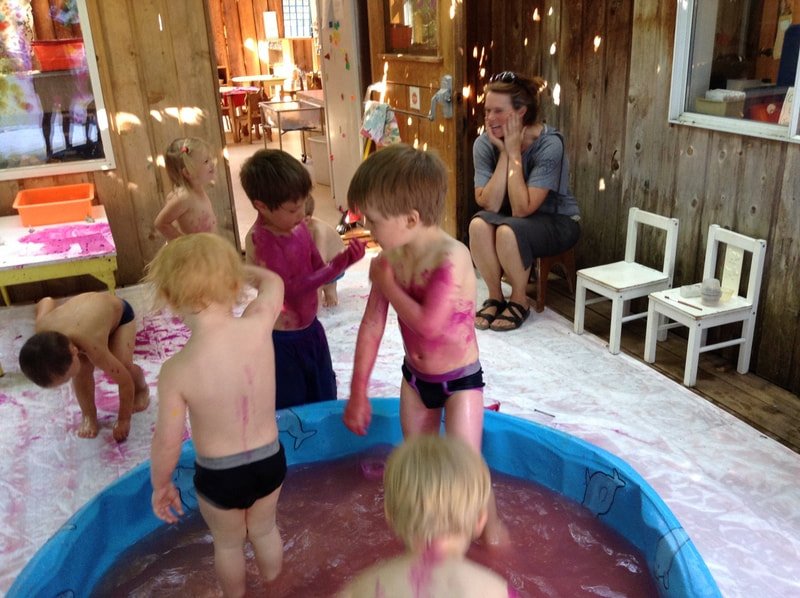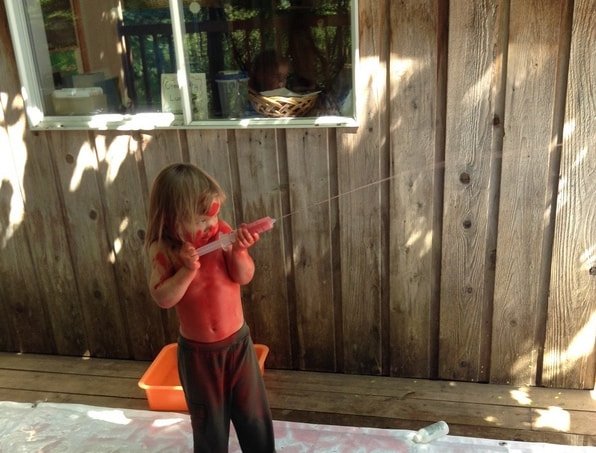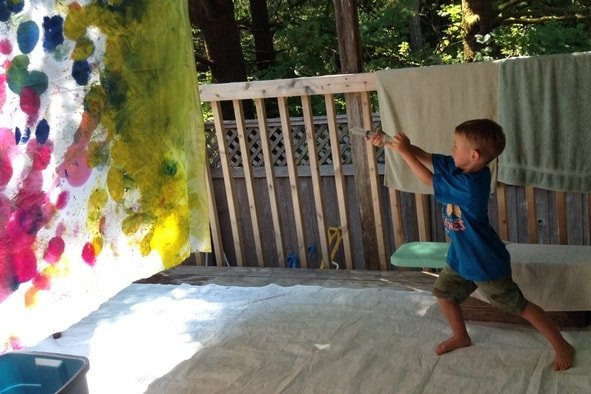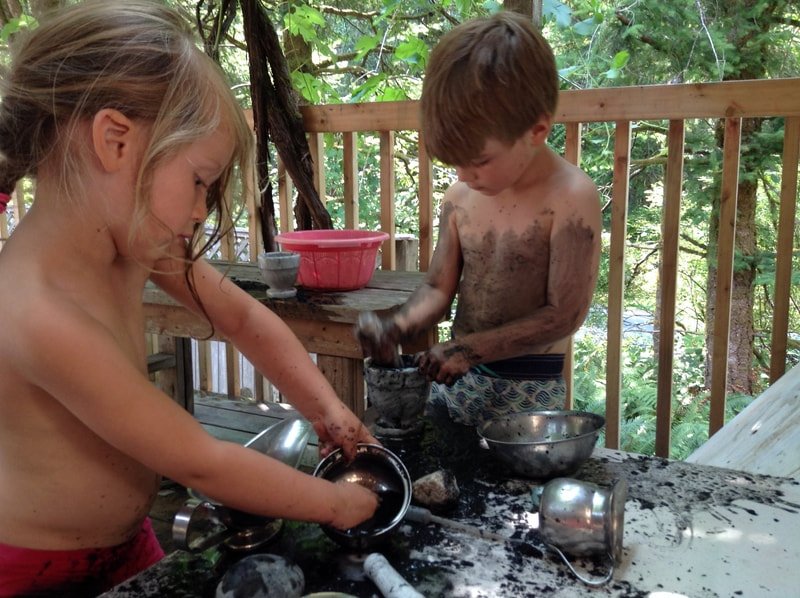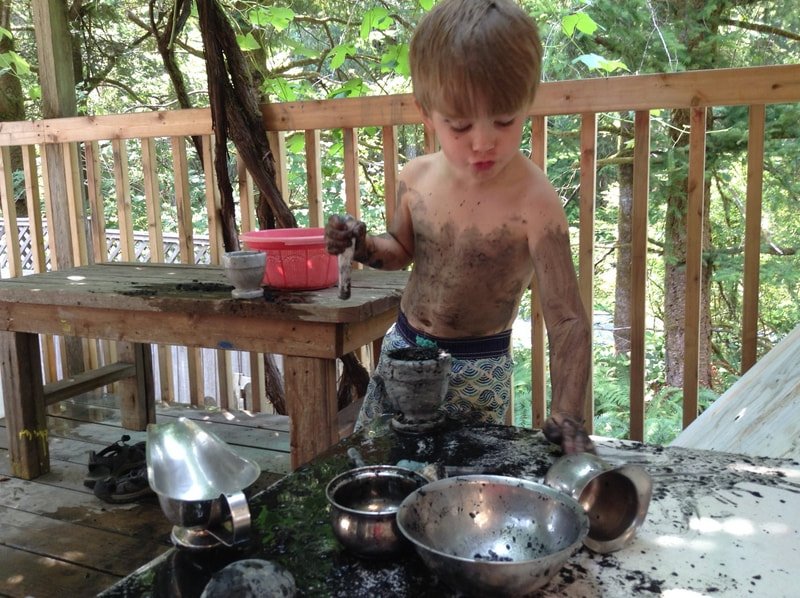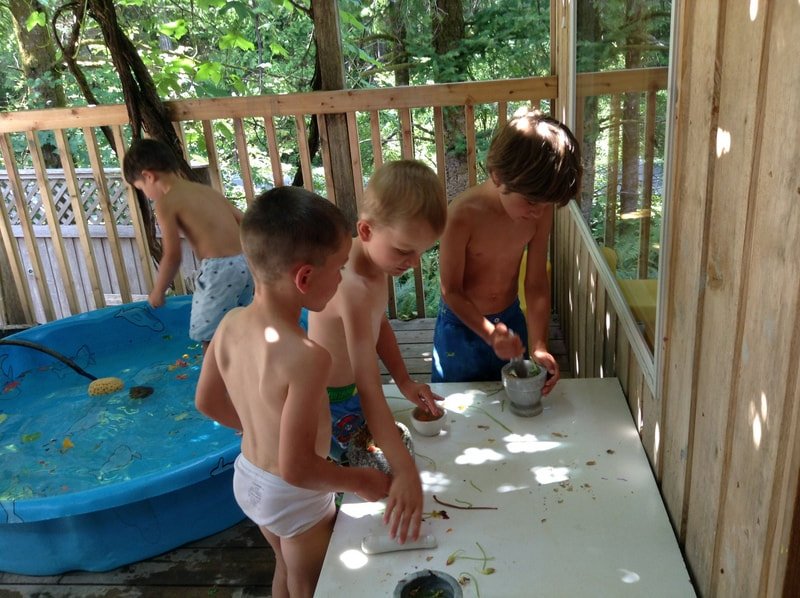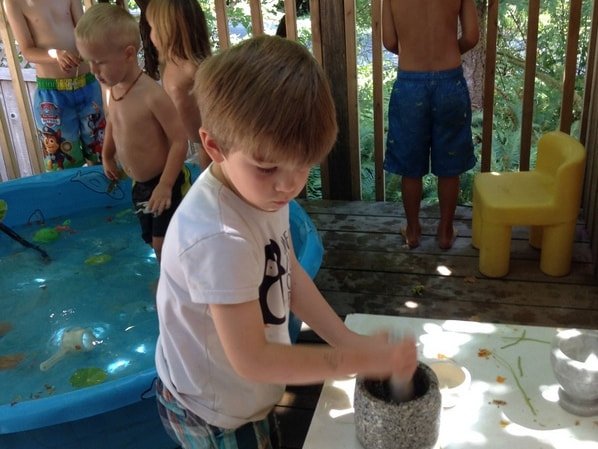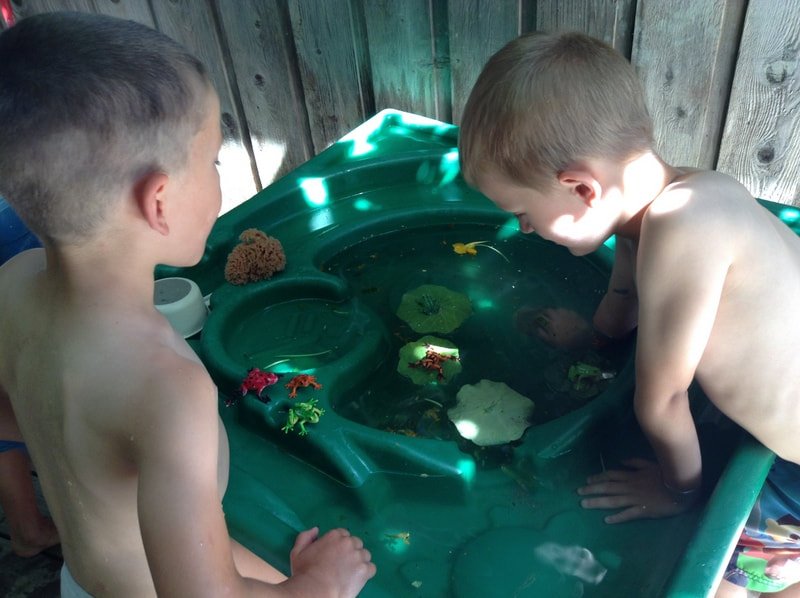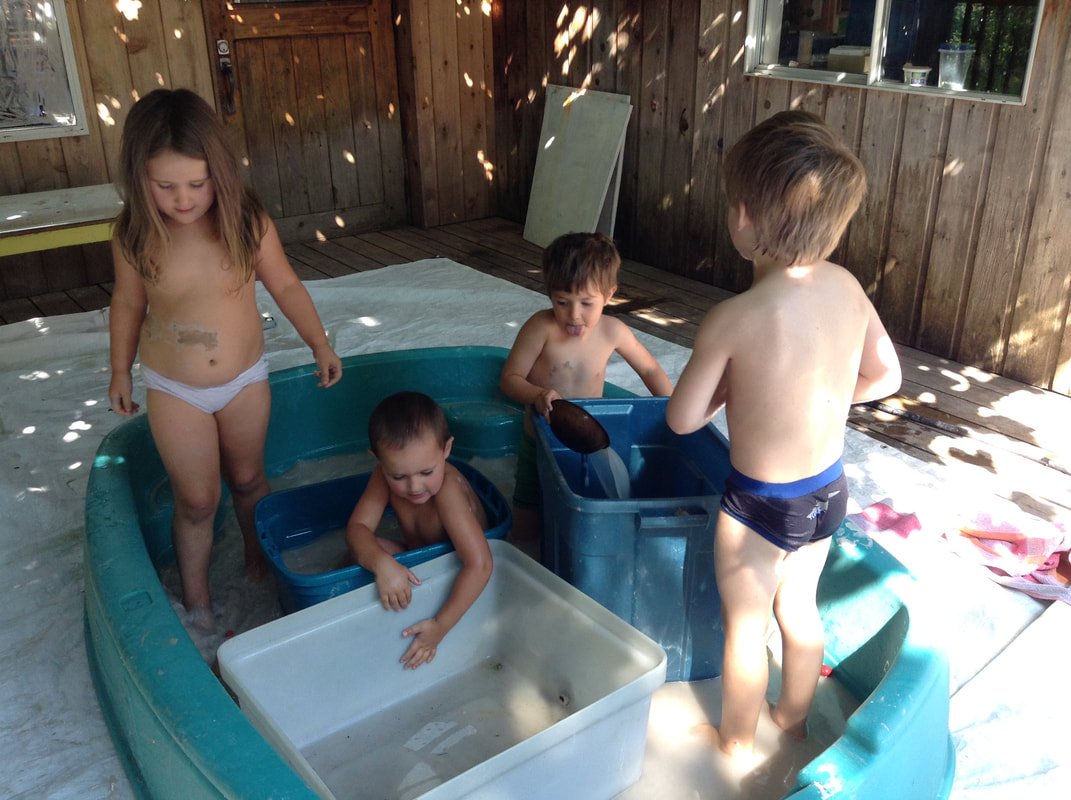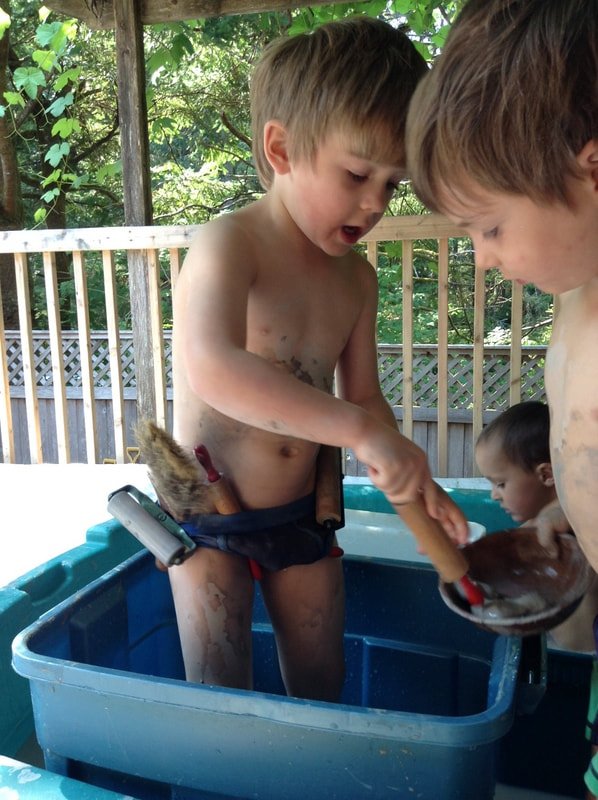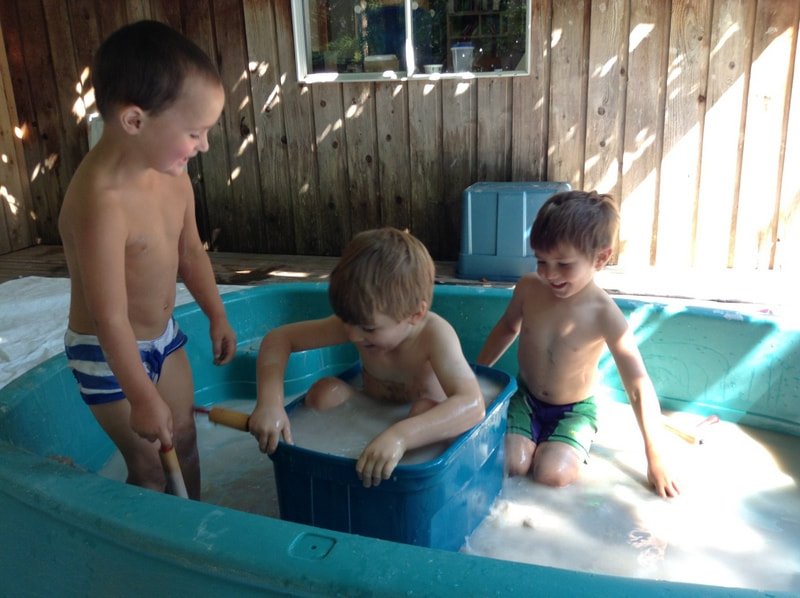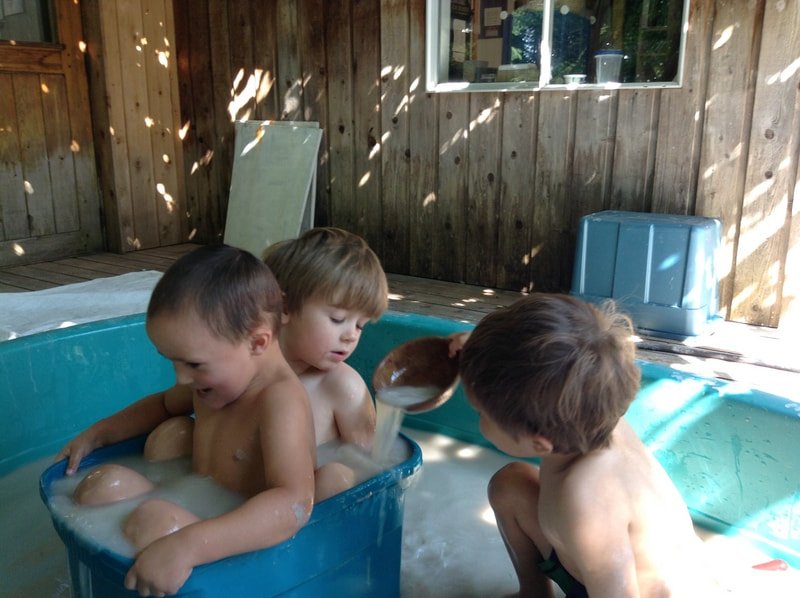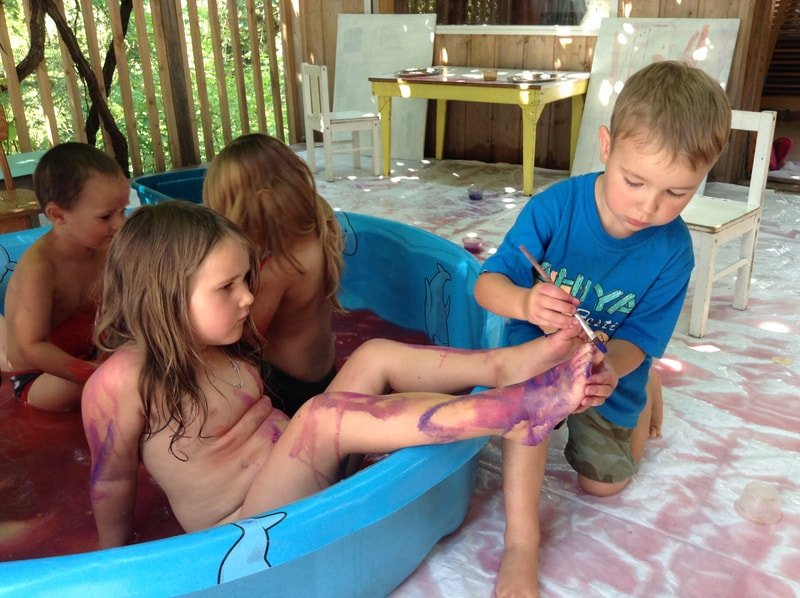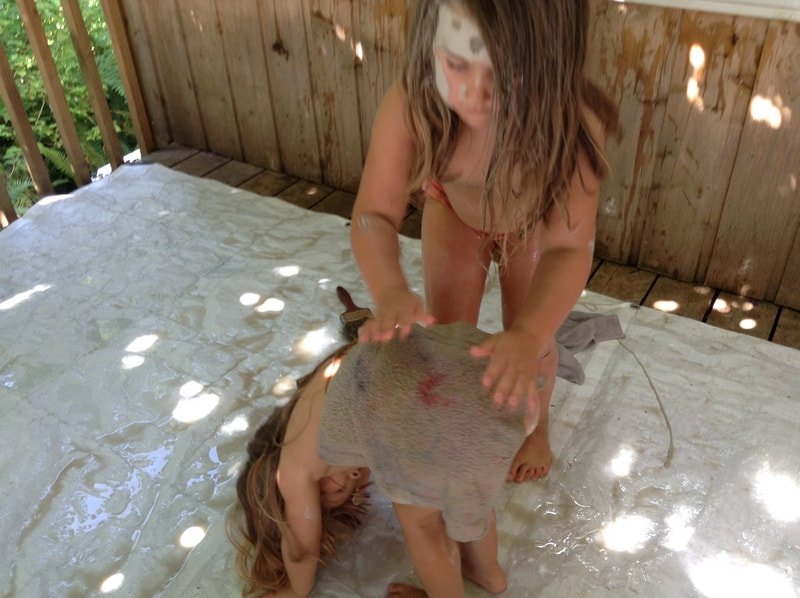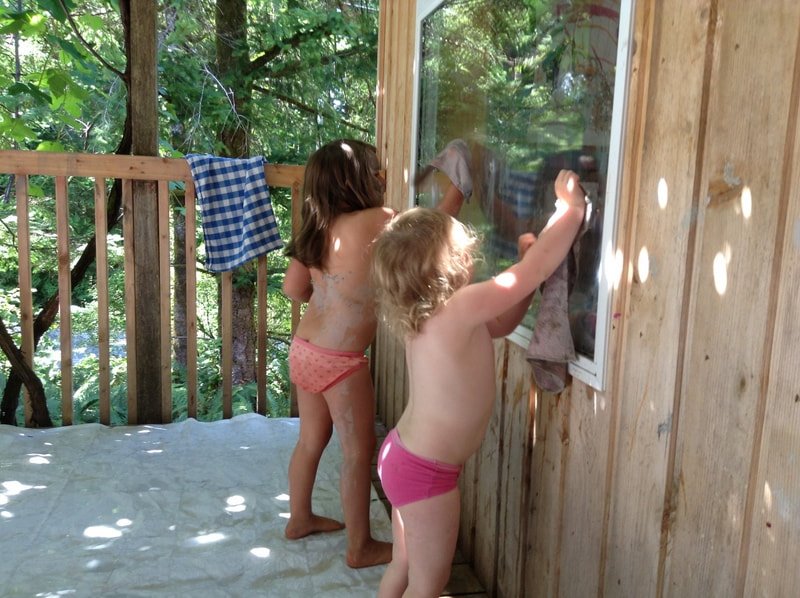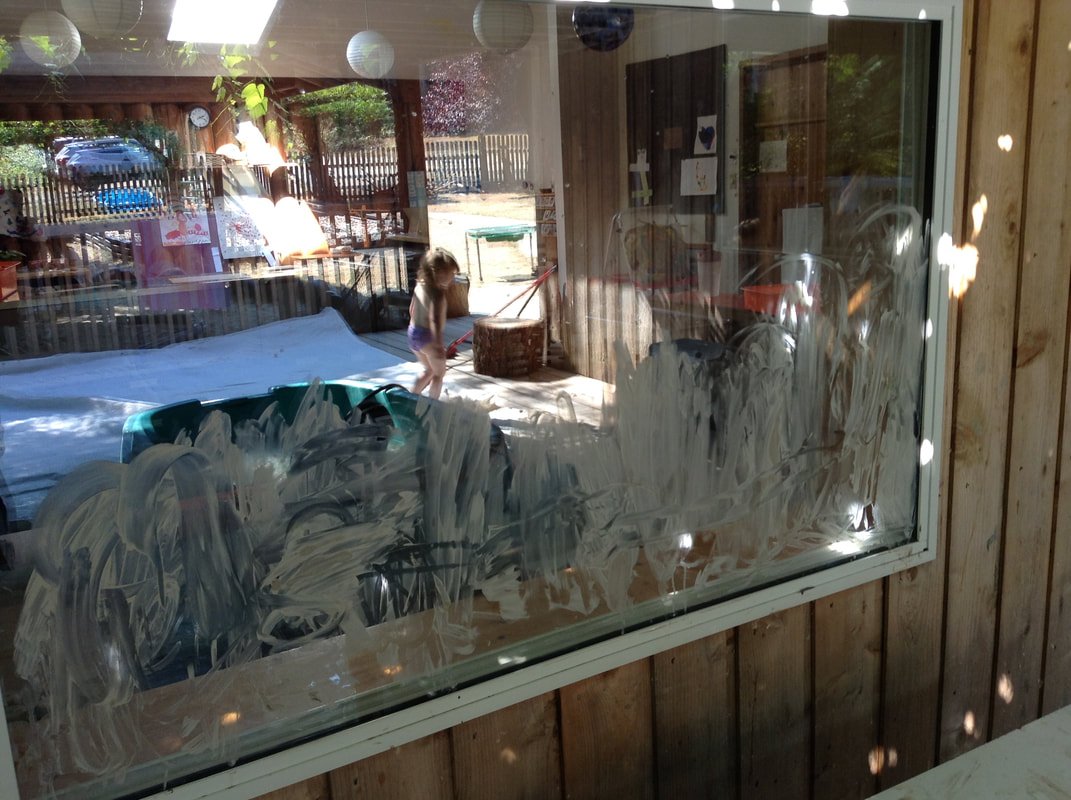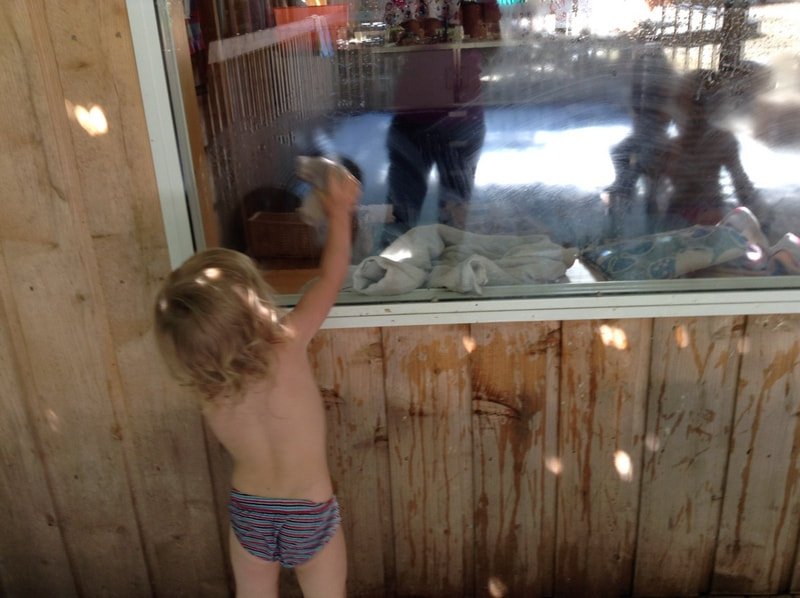Summer Deck Adventures
With warm weather in sight, we were happy to move our explorations out to the side deck. Out came the pools and tubs of water, and one day, dried water color pucks were offered as well as big syringes. How would the children use these materials to create?
To redirect away from the temptation of shooting water at each other, and the conflicts that ensued, I quickly painted a happy face on one of the circles on the fabric backdrop, and invited the children to aim at it. As the streams of water hit the freshly painted face, the happy face disintegrated and disappeared. This act of destruction was greeted by glee, as everyone joined in the thrill of making the faces disappear.
Deck Adventure: Charcoal
At a staff meeting we talked about this delight. What other materials and experiences could we offer that could give the children a similar sense of glee of boundary pushing within the safe confines of the deck?
We first gave them the freedom to experiment with the messy blackness of charcoal.
Two themes emerged in their play with the charcoal. Eamon poured the black mixture into the clear water and delighted in the spreading blackness. He called over the other children to witness the darkening of the water, and his excitement was contagious. Now the group had a goal. Let’s pollute the clear water with blackness. The goal of dirtying what was once clean was repeated over and over in our deck explorations always accompanied by a mood of elation.
Then their play turned imaginative. They started making poisons and potions for the teacher. A container filled with black water was offered to the teacher. Everyone watched with barely suppressed anticipation as the teacher pretended to drink. Then gleeful shouts of “Its poison, its poison. ” erupted. Making poisons is a recurring and popular game and is a clear example of children delighting in
“badness “ within the safety of play.
Deck Adventure: Nasturiums
On another deck adventure day, nasturtiums were floated in a water table and pool as well as set out on a table. So often the children are directed away from picking the flowers with gentle reminders to “Let them grow,” or “leave them for everyone to enjoy.” Would access to flowers be engaging for them? I also set out some mortar and pestles, and some plastic frogs so that the play could turn imaginative.
The children went directly to the mortar and pestles. Dylan grabbed a sifter, and caught a flower that was floating in the pool. With exuberance, he declared, “I catch flowers and tear them apart.” As he used the mortar and pestle to grind and crush the flowers, he declared “I am killing flowers.” This was taken up by the other children. They marched back and forth between the pool and table, scooping up flowers, and then crushing them in the mortar and pestles while repetitively chanting “We are killing flowers, We are killing flowers”
As the chant filled the air, I was reminded of our staff conversation and the observation that adults can control children’s play out of a place of discomfort and a desire to keep things nice. I stepped back and let their mood of elation and exhilaration fill the deck, and then they shifted focus to imaginative play with frogs on their own
Deck Adventure: Clay
On another day, we set out lumps of clay and tools for rolling. As the group was busy with rubbing, pounding, and squeezing the clay, they came up with ideas together about their play. As they narrated they hit on many boundary themes; making things dirty, death, poop, and destruction.
“We are doing a job,” declares Miles, Beckham and Eamon. “What job are you doing?” I ask. “making the water dirty ,” is the answer. Then their narration takes a turn towards death. “We are getting blood so that the bad guys die… How about we have to pound the blood out … It is actually poison that kills the bad guy.” The theme turns toward poop. “It is actually bad diarrhea that we are making. How about we are making diarrhea in a factory? … Look how much diarrhea we are making in the factory … How about the poison is actually made out of diarrhea?”
They describe their ideas with relish and look towards each other for confirmation. One of them gets carried away and attempts to throw nudity in the mix. He hooks his thumbs in his underwear, puts an excited grin on his face, and looks back and forth at the other two boys in an attempt to generate excitement of doing something that is usually not allowed. “I am going to take my underwear off,” he crows. “We keep our bottoms on at the children Centre,” is my response. It is not the response he is looking for and he abandons the idea.
Do we stop children’s play when we feel uncomfortable? Do we ask ourselves why we are stopping children’s play. If we are stopping children’s play because we are uncomfortable with its niceness or appropriateness, what happens to that sort of play?
Throughout our experiences staff were observing how children communicate their consent to each other, and how they ask permission from the teacher. We noticed that children often signalled with body language. For example, Griffin approached Isla with his hands up as claws and with a roar. She turned her body away, her expression was downcast and she looked away. Griffin stopped what he was doing and gave her space. Minutes later he approached, again in a similar stance. This time Isla mirrored his gestured, and soon they were deciding on their roles of Mama and baby cougar. With a teacher they would look at the teacher for a reaction, before acting.
Sometimes they asked each other verbally. “Can I paint your toes?” and sometimes they made a move and were met with either acceptance or cries of protest. We stepped in only when needed to smooth interactions and make their communication clear and respectful of each other.
As educators we were exploring knowing when to step in and when to stand back. Sometimes we were guiding the children to a deeper understanding of the boundaries they were exploring, and how it was different from what they were allowed to do “in the real world,” We also needed to highlight that these explorations weren’t a free–for-all, and that the children also had responsibilities.
When the clay came out a popular activity was smearing the window with clay to make it dirty. The intention was announced.
“ We are going to rub clay on the window,”
“ What will happen if you rub clay on the window?”
“It will get dirty! ... No one will be able to see!”
“Would you be allowed to make the windows dirty like this at home? What about at the library?” The children responded with a chorus of No’s.
“If you get the windows dirty with clay here, what do you need to do after you are done?” No one had an immediate answer.
“What do you think these cloths are here for?” We need to clean it up!”
We started with the intent of offering activities that would spark a similar joy to the glee when allowed to destroy something. We discovered together how to talk about and give form to our activities, so that the group had a deeper understanding of when and how they can step outside of regular boundaries.

